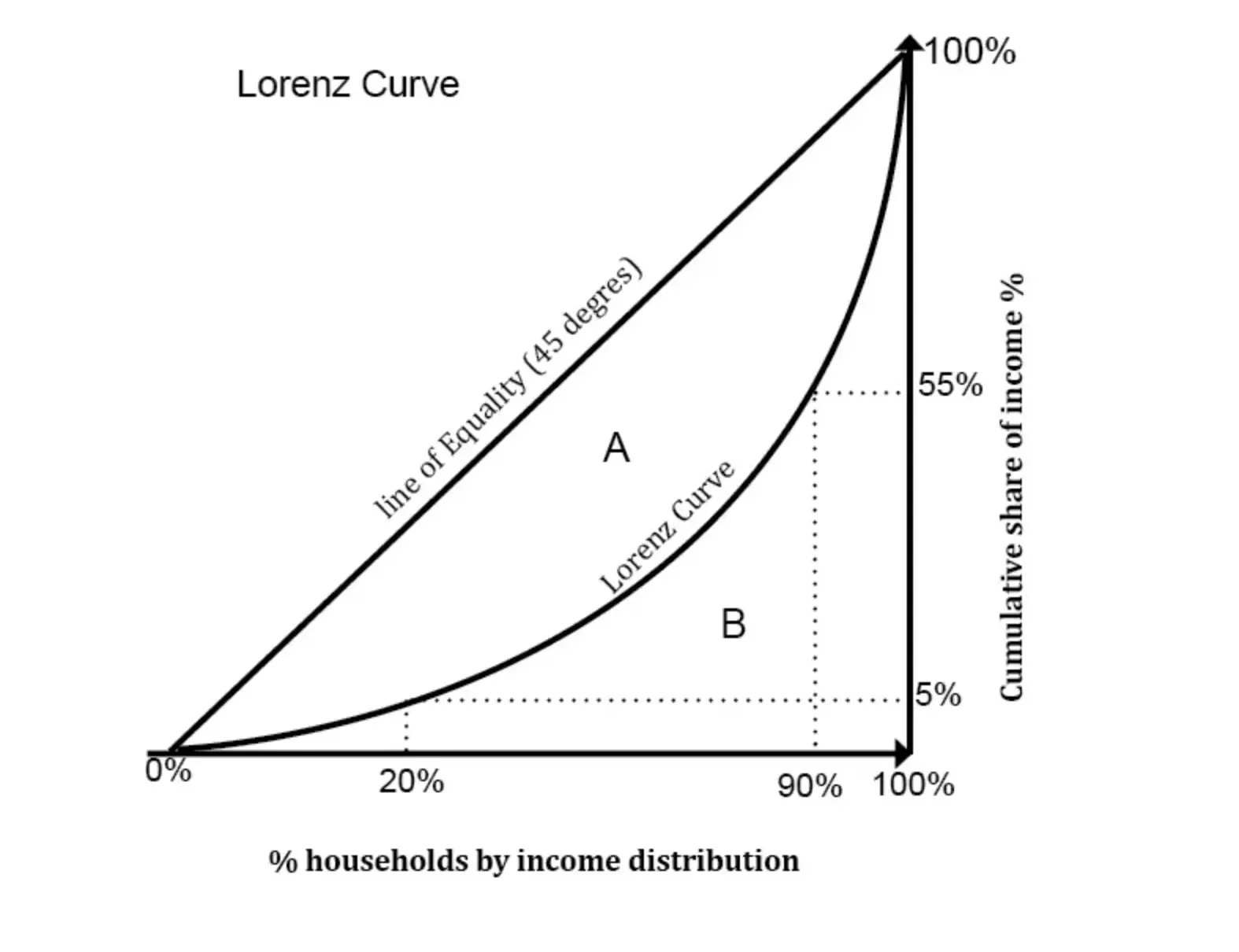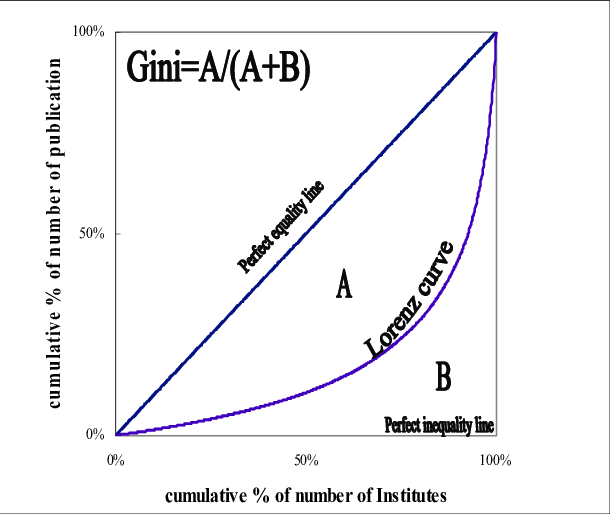Poverty and inequality part 1
5.0(1)
5.0(1)
Card Sorting
1/26
Earn XP
Description and Tags
Study Analytics
Name | Mastery | Learn | Test | Matching | Spaced |
|---|
No study sessions yet.
27 Terms
1
New cards
GDP
monetary value of all the finished g/s produced within country's borders in a year, by person
2
New cards
non-market activities
contribute to the national income, but not counted in GDP measurement (such as unpaid care services)
3
New cards
monetary value of the shadow economy
money in circulation - money used by consumption
4
New cards
Purchasing Power Parity (PPP)
rate at which the currency of one country would have to be converted into that of another country to buy the same amount of goods and services in each country; adjusted international dollars
5
New cards
Lorenz curve
shows the connection between cumulative percentgage of households and that of income(order from the poorest to the richest); total equality = 45-degree line

6
New cards
Gini coefficient measures
the ratio of the area between the 45 degree line of perfect income equality and the Lorenz curve, to the entire area under the 45 degree line of perfect income equality
is caluclated as A/(A+B)
is caluclated as A/(A+B)

7
New cards
If Gini coefficient = 0
income equality is perfect
8
New cards
If Gini coefficient = 1
all income is in hands of one household
9
New cards
poverty rate
percentage of the population whose family income falls below the poverty line
10
New cards
absolute poverty
individuals don't have access to basic requirement of life (food, shelter and clothing)
11
New cards
relative poverty
individuals are excluded from being able to take part in acceptable
standards of living in a society
standards of living in a society
12
New cards
poverty line
in Europe - set at 60% of the median income; World Bank - 1.90 international dollars/day
13
New cards
drivers of poverty
political conflicts, climate crisis, institutions (corruption)
14
New cards
components of GDP
C(private consumption) + I(investment=goods to expand production)+G(government spendings(consumption))+NX(net exports(export-import))
15
New cards
GDP in closed economy
C+I+G
16
New cards
model for consumption
c0+c1*Yd(disposable income)=c0+c1(Y-T)
c1=marginal propensity to consume(how much private consumption increases if income increases by 1)
c1=marginal propensity to consume(how much private consumption increases if income increases by 1)
17
New cards
disposable income
Y(income) - T(taxes minus government transfers)
18
New cards
total demand in the economy
Z=c0+c1(Y-T)+I+G
19
New cards
equilibrium of the economy
Y(production)=Z(demand)
20
New cards
equilibrium output
Y = (1/(1− c1))*[c0+I+G-c1*T]
21
New cards
multiplier
1/(1-c1)=how much the change of consume propensity will effect the whole output; the closer c1 is to 1 - the larger it is
22
New cards
total increase in production considering multplier effect
sum of geometric series of 1/(1-c1)
23
New cards
Ricardian equivalence
with lowering taxes, rational private households start to save more to repay these taxes in the future instead of consuming more
24
New cards
paradox of thrift
with increased savings, total output of the economy decreases
25
New cards
savings
S=I=Y-C=−c0 + (1 − c1)*Y
26
New cards
savings are good in long-run growth but
bad in short-run as one has less income left to spend in the economy
27
New cards